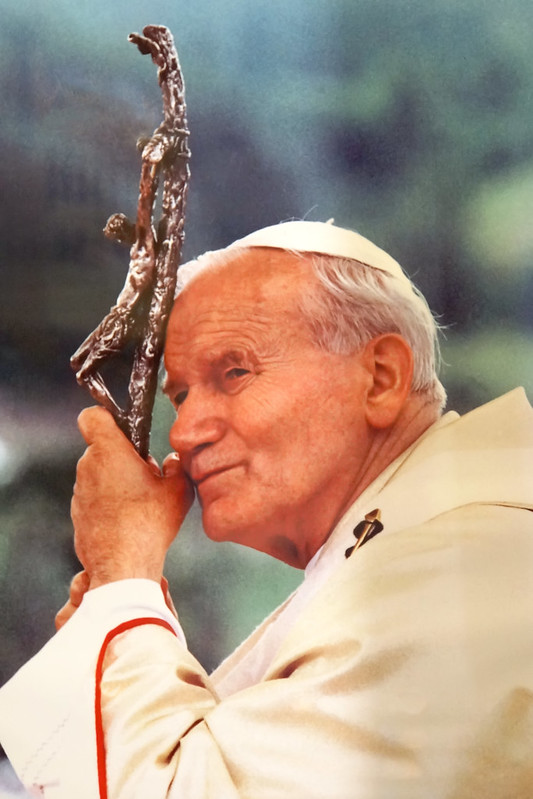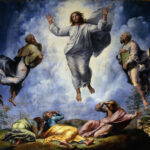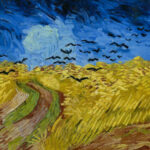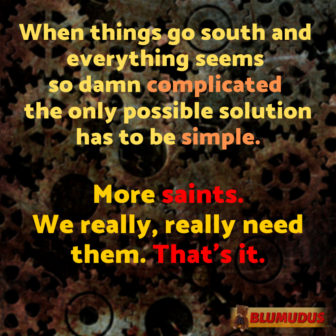In this third article I will dip my foot in the heart of the Holy Week which is about to begin, but only momentarily, then I’ll steer to a different takeaway message.
PALM SUNDAY: PASSION OF THE LORD – YEAR A

Today I want to focus only on the introductory reading for this festivity, leaving for another day the magnificent account of the Passion, so full of ideas and inspiration.
People acclaim Jesus as a great prophet; while he’s entering Jerusalem the crowd prepares the way for him by spreading tree branches on the street (hence our traditional use of palms and olive trees for the celebration). Many go a step further and put their cloaks on the ground: an almost excessive welcome, worthy of a king. Think about it: faced with a dirt road, either dusty or muddy, this gesture is about showing a self-humiliating kind of reverence, by soiling their precious cloaks, to make his passage at least symbolically more comfortable…
A puzzling passage: in the text there’s a “dialogue” between the city, which wonders who this Jesus is, and the crowds, who respond by calling him a prophet, that is: a man who brings the word of God.
Analyzing this usage of words is above my pay grade. Collectively, as it appears in the story, the crowd, this shapeless yet multiform entity, is all for Jesus. After a few days, however, they will scream they want Pilate to free Barabbas and to crucify this very Jesus whom they are now acclaiming.
The contrast couldn’t be starker.
But a skeptical approach can easily eliminate the problem and take apart each and every aspect of this account, in a crescendo:
-those were different crowds (the city represents the actual population of Jerusalem, this other crowd is composed of peasants coming from outside, the bulk of it disciples, perhaps having organized all of this to leave a mark, to impress the bystanders);
– there is a contrast indeed, but the events of the triumphal entry and the crucifixion are perhaps quite separated in time from each other, and were presented together only for narrative reasons;
– the entire episode of the Palms could be fabricated;
– one can easily maintain that any and all details within these evangelical stories could be an invention.
Yet the first possibility, that of a more circumscribed event involving a crowd of followers, is already so easily well within the interests and abilities of the apostles that it can be described as more than likely to have happened; why then the prejudicial hostility of many to the historical truth of the triumphal entry into Jerusalem? Jesus sends two disciples to get animals to ride, a colt and a donkey. The scene, which we would be tempted to read as a fantastic story, where Jesus predicts future events and strangers comply without asking questions, is actually easily explained as an event planned in advance.
Additionally, in the incandescent social climate of those times, with all the messianic expectations, it would be really naive to believe that only the disciples of Jesus could be found in such a crowd.
People are fickle, emotional, impressionable. The contrast I mentioned above is “beautiful” because it tells us something about human nature. Even the temporal proximity to the Passion, as presented in the Gospel, corresponds to what we could expect from a real event: otherwise it would be hard to think that a popular rabbi, who according to rumors seemed to identify himself with something more than a prophet, would have obtained such a level of visibility and appreciation among the populace, but subsequently nothing would have come out of it, with the situation becoming quiet again… and through all this, could the authorities have decided to remain vigilant but inactive, waiting to get back at him at a later time, to arrest him when the crisis was over? The story as it stands is way more credible: a surge in Jesus’ popularity as Passover approached seemed too dangerous from the point of view of the High Priests: he had to be stopped.
And so… back to square one, a credible account after all: the crowd at first cheers Jesus, but after a while they have him crucified.
Credible above all because it speaks to us of our humanity, it illustrates who we are. It’s us, all of us: we’re guilty as charged, foolishly doing one thing and then its opposite, longing for the approval of our peers. We’re often being played: who could say he never is?
But here I was interested in underlining the archetypal value of this Palm Sunday/Passion contrast, because it tells us much more, if one manages to see through the fine structure of our society, the fabric of history.
History is made by humans, not really a surprise that it should reflect their miseries. So that’s why there are abundant historical examples that follow precisely this pattern, Palms/Passion. Triumph/Collapse.
Though only Jesus Christ has also the ability to resurrect afterwards.
There was an occasion in 2012 in which I spoke about this simple pattern during a meeting with a group of youngsters from my parish. I mentioned the pseudo-prophecy attributed to San Malachy, which meant to assign a motto to each future pope, thus inspiring readers to try and make sense of those few enigmatic words, to be matched with the character and personal history of popes. And so John Paul II, identified (if the prophecy were true, and I don’t believe it is) with the motto “De Labore Solis” (of the labor of the Sun), was prophecied to be the third to last pope.
Important detail: a widely known prophecy influences the actions of at least some, even when it’s not of supernatural origin. Hence I expect this alleged prophecy to eventually fail in some way, but not without giving an important contribution to a certain scenario.
It has been pointed out how our beloved Polish pope really made the effort to tirelessly travel around the world like the sun does, to illuminate every corner of the earth with the light of the Gospel: an unprecedented commitment, considering how many popes in the past rarely if ever moved from Rome.
I was one day startled by this sudden thought: what about the King of France? The third to last king, Louis XIV, was nicknamed the Sun King, and represented the pinnacle of prestige and power for his monarchy. Third to last because, as everyone knows, Louis XVI ended up guillotined.
Now, aside from obviously not expecting any calamities for Pope Francis, the similarities are striking.
How come the populace who admired this prophet entering the city, chanting his praise from the roadside, not many days later screamed they wanted to crucify him? (I’m instinctively brought to think some individuals were present at both events.)
How is it that in history books we read of the might of massive Persian armies, and then in a few years, suddenly Persia is wiped out?
How did a monarchy as strong and full of honors and possessions as that of Louis XIV collapse a few years later?
And what is happening to the Catholic Church? Do we realize the unprecedented level reached by the present crisis?
Sounds eerily distant, that time in which one could really and sincerely defend Pope Wojtyla from his detractors, counting on a widespread sense of respect, even if grudgingly (in the secular media!) for the man, his office, even for the Church itself: they were fighting against it, but it was seen as a formidable and capable adversary.
How much water has passed under the bridge!
Today the Church is rarely the subject of mockery, because it’s now considered defeated and irrelevant, not even worthy of the consideration of those who despise it: a waste of time, better to deal with more important things.
And to add insult to injury, by now the forces that are destroying it are mostly acting from the inside: increasingly empty churches; craven, irrelevant or heretical priests; bishops chosen through upside down criteria, following the worst practices (and worldview) that come from politics. The critical voices and healthy components, increasingly silenced. We’re indeed facing a hard, and perhaps long, Passion for the Church. A passion in which we can appreciate our impotence. We are useless servants after all. The Resurrection.. that only One can give; this includes a metaphorical resurrection: the spiritual rebirth of a people. Not in our power.
And yet, this grim realization can’t be an excuse to let go, or to try and busy ourselves with something else… anything, possibly trivial and selfish.
No, we need to be fully aware of the times we are facing, to fight the good fight.
I fondly recall the words of my old parish priest, in view of that meeting with the youngsters (he knows me well, he knows I can say inappropriate things): he insisted I had to avoid giving them scandal. But I deliberately chose not to protect them from the scandal, announcing them a great crisis was underway in the Church. And I stand by that decision: if at age 18 one is being accustomed to the thought that belonging to the Catholic Church will become hard and risky, perhaps he/she will not feel lost nor abandon the faith when at 40 it will be a challenge for him/her to find an open church, and even more painfully difficult to know if a bona fide Catholic rite was to be celebrated inside anyway.
We have to prepare ourselves.
We’ll always look with nostalgia and gratitude to the season of Lolek, of our saint Karol Wojtyla: a magnificent, long procession of the Palms. Our last, memorable mass happening, full of optimism and oceanic crowds. A season of frank, direct words, reflection of a solid doctrine, taught with deep insight and intellectual rigor.
The Palms of John Paul II could be a new thought to cultivate: a safe haven in our memory and vision, a sort of source of energy with which we could metaphorically recharge our batteries.
There will be, one day, a new season of triumphs. In a completely different form. This is part of what we believe in.










































